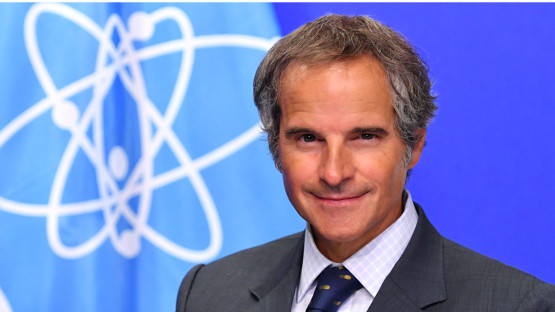Why is all this happening? It seems relatively obvious. It’s climate change. When all is said and done, nuclear energy is a superior climate solution that vastly improves our prospects for simultaneously addressing high energy demand—both on and off grids—and the need to eliminate CO2 and methane emissions. And nuclear helps reduce the firming costs of renewables, keeping rates lower for consumers.
For a long time, the nuclear industry itself didn’t recognize its central role in solving climate and energy insecurity. It took little interest in the IPCC’s annual COP meetings, seemed indifferent to global efforts to reduce emissions and was unmoved by scientific warnings of dire climate impacts. Yet that, too, is changing and young nuclear advocates, if not the industry, have demanded a seat at the climate table.
Which is a function of changes within the industry. A new generation of climate-focused technologists are launching innovative ventures and pushing for a more expansive menu of options. Most are working to develop non-LWR designs that are smaller, innately safe, with fewer safety systems and, if appropriately regulated, lower cost. NuScale, the first advanced design to attain design certification, quickly closed a SPAC deal, and made “SMR” a stock ticker forever.
Dozens of other companies are also hard at work, developing new reactors to be wrapped in beautiful architectural designs, negotiating LOIs and MOUs for deployments at retired coal or industrial plants and, importantly, filling sales pipelines. New designs are poised to provide high-temperature heat, electricity, and storage and appeal to buyers looking for as little as 1 MW on up to 350 MW. It’s encouraging to see a very competitive atomictech sector emerging, with strong teams vying for grants, pitching investors and lining up strategic partners and customers.
These midsized, small and micro designs are rapidly transforming nuclear into a cleantech sector. Investors see Gen IV’s ability to manufacture components to be shipped to sites for rapid construction, distinguishing itself from the prior generation that took too long and went far over budget. Not only is smaller better for meeting the needs of tomorrow’s diverse and distributed energy buyers, it’s also making new nuclear more appealing to venture investors because these are mostly companies developing tech products that can scale and grow revenues quickly, not infrastructure projects that cannot.
The nuclear sector is starting to attract investors who are impatient with inaction on climate. It’s not just venture capital, many other types of investors are seeking ESG investments that help them meet their sustainability goals. Regardless of ESG’s issues, what is clear is that the desire to invest in companies that address environmental, social and governance risks is not going away. ESG remains the hottest area of growth in the investment sector. Just imagine how that interest will grow when the nuclear industry establishes nuclear energy’s climate and ESG bona fides with the ESG rating agencies.
Global decarbonization pledges mean very little when there aren’t viable solutions. To solve that problem, our best option is to accelerate innovation.
Technology innovation has consistently transformed scarcity into abundance. It has increased global food supplies, liberated automobiles from dirty petroleum and put supercomputers in people’s pockets—all while reducing costs and returning profits in the process.
The market is eagerly awaiting the “Tesla” of energy and the competition is on. This is really the time for the nuclear industry to step up and deliver impeccable and appealing designs that make the case loud and clear. Anything less and the world will move ahead with spending the estimated $6 trillion a year on other technology solutions that offer vastly less success in reducing emissions.
Larry Fink, CEO of BlackRock, asserts that the next wave of billion dollar startups (the unicorns) will be in climate. We are confident that the renewed nuclear sector, now with dozens of innovative new climate solutions spanning fission, fusion and beyond, will mint many of these.
Reliable energy is central to society. The total market needing clean energy is in the double-digit trillions. Even before we add new AI, crypto and carbon capture demand, there’s plenty of room for dozens of nuclear technology winners and vertical support ventures. So, while plenty of risks do remain, with the nuclear industry fully “invested,” the opportunities for advanced nuclear entrepreneurs and investors become that much more compelling.
 Nuclear is at an inflection point. Oliver Stone’s powerful new documentary film, Nuclear Now, is changing the public’s calculus on nuclear’s role in reducing CO2 emissions. Bank of America’s report, “The Nuclear Necessity,” issued the first “buy” recommendation for nuclear, citing key bullish catalysts: rising demand and growing belief that nuclear power is “the best climate solution.” This is what the industry has been waiting for.
Nuclear is at an inflection point. Oliver Stone’s powerful new documentary film, Nuclear Now, is changing the public’s calculus on nuclear’s role in reducing CO2 emissions. Bank of America’s report, “The Nuclear Necessity,” issued the first “buy” recommendation for nuclear, citing key bullish catalysts: rising demand and growing belief that nuclear power is “the best climate solution.” This is what the industry has been waiting for.
To meet the world’s urgent decarbonization goals, however, we must accelerate efforts to introduce the next generation of nuclear designs at the speed of business. Hard work and technical excellence, long the hallmark of this industry, are not enough. We need to match the urgency of those seeking to deploy new decarbonization solutions.
Investing in Nuclear.
Private sector investment also has a key role to play in funding innovation. Nucleation Capital is a unique fund that offers individuals and other allocators a pathway to invest in these emerging nuclear technologies. We couldn’t be more excited to both support this success and share the bright future you are delivering.
Valerie Gardner & Rod Adams
Managing Partners
Nucleation Capital
Nucleation makes investing in venture capital easy and affordable.
Learn how you can participate at:
NUCLEATIONCAPITAL.COM




 Nuclear is at an inflection point. Oliver Stone’s powerful new documentary film, Nuclear Now, is changing the public’s calculus on nuclear’s role in reducing CO2 emissions. Bank of America’s report, “The Nuclear Necessity,” issued the first “buy” recommendation for nuclear, citing key bullish catalysts: rising demand and growing belief that nuclear power is “the best climate solution.” This is what the industry has been waiting for.
Nuclear is at an inflection point. Oliver Stone’s powerful new documentary film, Nuclear Now, is changing the public’s calculus on nuclear’s role in reducing CO2 emissions. Bank of America’s report, “The Nuclear Necessity,” issued the first “buy” recommendation for nuclear, citing key bullish catalysts: rising demand and growing belief that nuclear power is “the best climate solution.” This is what the industry has been waiting for.






